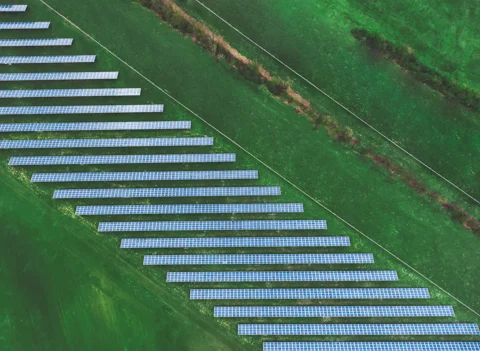With inflation skyrocketing, the Dutch government has earmarked tens of billions for purchasing power repair - through the energy price cap, VAT reduction on energy and an energy surcharge for minimum incomes, among other measures. Far-reaching and costly measures were also taken in our neighboring countries to shore up purchasing power. What instruments have other countries chosen for this purpose and what are their advantages and disadvantages? In three articles, macroeconomist Charles Kalshoven (APG) shines a light on one European member state. Episode 1: Germany.
To ease the burden in 2022 and 2023, the German government has allocated a total of nearly 200 billion. The purse strings have been tightened enormously there too, even though German inflation, at 10.4 percent (October), is a lot lower than Dutch inflation (16.8 percent according to the European definition). Part of that money is spent on various one-time benefits of limited amounts, which are mainly aimed at lower income groups: recipients of unemployment or social benefits, or rent allowance. Another portion is going to tax measures.
Maximum natural gas price
Measures that stand out are the reduction of the energy tax on fuels from June 1 to August 31, 2022 (29.55 cents/liter for gasoline and 14.04 cents/liter for diesel) and the temporary (until the end of March 2024) VAT reduction on gas from 19 to 7 percent. But also noteworthy is the introduction of a €49 public transport monthly pass that allows you to take unlimited (regional) trains, buses and subways. Last but not least, the Germans are introducing a maximum natural gas price for households as well as businesses.
Targeted measures, which can be taken quickly and have limited collateral damage for treasury or other policy goals. Kalshoven believes that that, in a nutshell, is what a government should strive for.
“Effectiveness is paramount. Is a measure hitting its target? There can also be a trade-off between those goals, meaning that the closer you want to get to goal A, the more you sacrifice on goal B and vice versa. Another criterion is efficiency. What costs do you have to incur to achieve the goal? These could be direct costs due to rising national debt, or indirect costs in the form of higher taxes in the future. And are better alternative measures conceivable? A third criterion is speed/feasibility. And finally, you can look at whether or not a measure will disrupt competition.”
Disrupting competition
Regarding the maximum natural gas price Germany has introduced for citizens and businesses, Kalshoven is critical in several respects.
“If you want to accelerate the energy transition, limiting the price is not a good idea. It does not provoke the behavioral response you want, because then there is no longer a price incentive to reduce natural gas consumption. What I like in the Netherlands is that the price cap only applies to average usage. But if you don’t tie such a price ceiling to a quota, it could cost the treasury a lot of money. In terms of poverty prevention, you may have achieved your goal, but in terms of accelerating the energy transition and saving energy, you haven’t. And that is a waste of money. Moreover, a maximum natural gas price like in Germany disrupts competition in the internal European market. After all, unlike in the Netherlands, that maximum also applies to companies and in this way, German companies are given an unfair advantage over their European competitors.”
Car use cheaper
About the promotion of public transport in Germany - the €49-monthly pass - Kalshoven is positive, but he says it does not form a happy combination with the excise tax reduction the Germans implemented for various fuels.
“You have offered people an alternative by making public transport cheaper, but then you should not also make car use cheaper. Germans also have a mileage allowance of 38 cents. That’s really hefty. What I like about the German public transport policy in itself is that it helps prevent poverty and at the same time is good for the energy transition. Namely, you ensure that existing infrastructure is better utilized. That way, road miles can decrease, and the miles you travel by public transport are what you were doing anyway. It may provoke extra travel, but on balance you save energy and, of course, carbon emissions, with that kind of public transport policy.”
Targeted pain relief
If possible, you want targeted pain relief. A dentist doesn’t put patients under anesthesia for drilling; at most, he gives a local freezing. For that reason, Kalshoven is positive about the subsidies and benefits introduced in Germany to ease the pain of inflation.
“Because German subsidies are aimed at low-income earners, they get to people who need it. That targeting is desirable, unlike the drastic remedies the German government has chosen elsewhere, such as excise tax cuts and maximum tariffs.”
Because those drastic remedies cost the treasury a lot of money, they create a less desirable situation from a macroeconomic perspective. For with an aid package of 200 billion euros, Germany risks working against the monetary policy of the European Central Bank (ECB).
In opposition to each other
Kalshoven: “Germany’s gross domestic product is roughly 4,000 billion euros. An aid package of 200 billion euros amounts to 5 percent of GDP and that really is a lot of money. At a time like that, two policies - fiscal policy and monetary policy - start to work very much in opposition to each other. After all, the ECB wants to slow down the economy to curb inflation. But if governments offset all price increases, they are actually boosting the economy a bit. However, those higher prices are a national loss, even in Germany. It is an illusion to think that you can compensate those higher prices completely and for everyone.”
When you compare the support measures in the Netherlands and Germany, both countries are providing substantial support packages, Kalshoven said.
“In both countries, public finances are in good shape, which makes this kind of package possible. Germany is even more robust than the Netherlands. In our case, the package is about 25 billion euros, which could go up to 40 billion euros, or 4 percent of national income. In Germany, it could even reach 200 billion, or 5 percent of the economy.”
Nice problem
And although Germany, like the Netherlands, is struggling to take targeted measures, Kalshoven notes that the Germans are more successful at supporting lower incomes in a targeted way with one-time payments and specific subsidies. However, this does not apply to the maximum natural gas price in Germany.
“That is in fact not targeted, because it applies to everyone - citizens and companies. In the Netherlands, however, the allowance for energy of 190 euros in November and December is untargeted and price caps are limited. In practice, it proves very difficult to meet the ideal of measures that are both timely, effective and efficient.”
But ultimately that struggle is “a relatively nice problem to have,” Kalshoven says. “A total lack of room for compensation measures would force households to make very painful short-term adjustments.”



